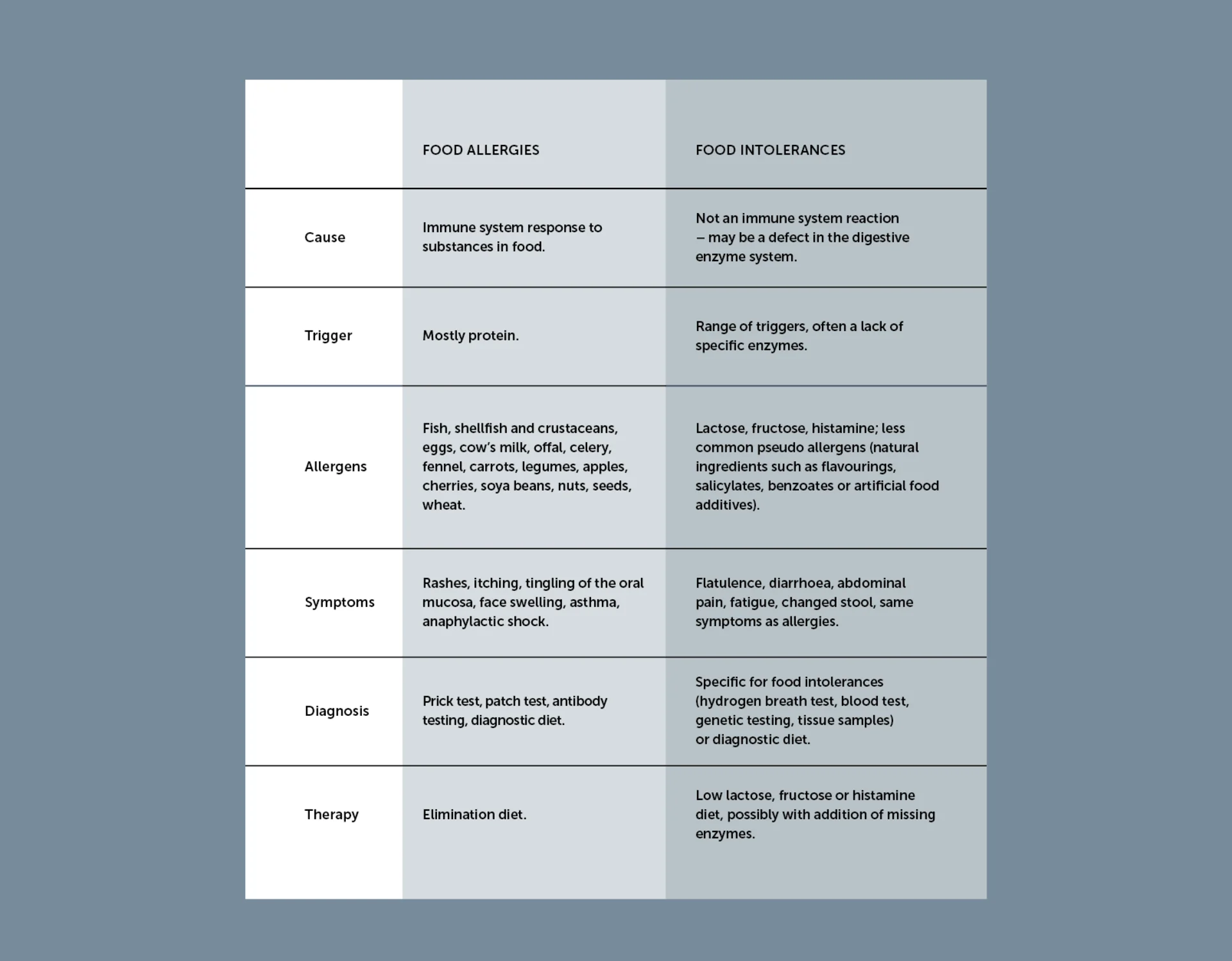Allergies - a fact check
The number of allergy sufferers seems to be growing all the time; or are we just imagining it? The sad truth is that the number of people affected is indeed steadily increasing. In Austria alone, around a million people are to some degree affected by allergies. However, we also know that there is more than a touch of hysteria when it comes to allergies: around 30% of the population in the German-speaking world believe they are allergic, while only about 3% of adults actually are. In the thicket of confusion between allergy and intolerance, there are far more allergy findings than there are allergies. Allergy sufferer numbers are constantly on the rise!
Principal reasons
For the increased number of allergy sufferers
- Improved diagnosis means that allergies and intolerances can be identified more quickly.
- Industrially manufactured foods challenge the body with a multitude of chemical ingredients and additives.
- The year-round availability of foods means that we never take a rest from allergens.
- Today, we tend to share enclosed spaces with a lot more pets than we used to.
- Children’s immune systems have less training: They grow up in a much more hygienic environment than before and hardly have the opportunity to develop a normally functioning immune system.
- The high rate of Caesarean section births leads to a weaker immune system in children because they do not come into contact with the mother‘s vaginal flora which is an important bacterial ‘starter kit’.
- Trees and other plants grow in polluted environments, producing stress proteins that facilitate their survival, but are highly allergenic.
What is an allergy?
As soon as we are born, our immune system starts to acquire tolerance. Allergies arise because our tolerance is progressively breached, allowing usually harmless things like pollen or peanuts to trigger serious symptoms.
The use of medication may also influence the response to allergens, as can age and the frequency of allergen exposure.
Which Food Intolerances Are Most Prevalent?
The most common food intolerances
Lactose intolerance is caused by an enzyme defect that is either innate or acquired. To break down lactose, the body requires lactase, an enzyme that healthy infants and young children generally produce in sufficient quantity, although production does decline as we grow older. If insufficient enzyme is available, the milk sugar molecules are not broken down before they enter the colon where they ferment, producing typical symptoms such as bloating and diarrhoea, chronic fatigue, IBS, head and body aches and sleep disorders.
Once a patient has been diagnosed with lactose intolerance, they will have to reduce or avoid milk sugar – depending on the intensity of their intolerance.
Even people who do not suffer from lactose intolerance should avoid cow’s milk and opt instead for milk from sheep or goats: as well as containing less lactose, it also contains significantly less casein, a protein that, like gluten in wheat, causes villus atrophy. Even better than milk are dairy products such as yoghurts, curd cheeses or cheese, i.e. ‘predigested’ milk that places less strain on the intestines.
When the body is unable to absorb fructose, the cause is usually a defect in the small intestine, which is almost always accompanied by impaired intestinal flora. This leads to symptoms that are similar to lactose intolerance, and are also often associated with depressive moods. This is frequently accompanied by an intolerance to sorbitol, a sugar alcohol found in many fruits and used to sweeten diet foods. The increase in fructose intolerance we see today is due to the addition of fructose to more and more products such as soft drinks, yoghurts etc.
Coeliac disease is a serious disorder of the intestinal mucosa, and the most pronounced form of gluten intolerance. Its frequency has increased five-fold in 30 years because today’s cereals, bred for high yields and pest resistance, are very rich in gluten. Inflammatory bowel diseases are found primarily in countries where most consumed grain products are made from wheat. Coeliacs must abstain from any cereals containing gluten.
Menopause-Fit
Is wheat making you ill?
ATIs, or amylase trypsin inhibitors, are proteins found in a range of gluten-containing cereals such as wheat – especially modern high-yield varieties. They protect the grain against premature protein degradation and therefore against parasites, but they can cause an immunological reaction in people. As well as not breaking down easily in the gut, ATIs are also flour dust allergens. Studies show that ATIs activate the innate immune system, which explains symptoms such as joint pain, fatigue, brain fog etc.
Additionally, there are indications that the ATIs in wheat cause stronger inflammatory reactions in the intestine than other grain types. The increase of ATIs in modern, high-yield wheat varieties appears to be one of the prime causes for wheat-related health complaints. According to Harvard Medical School professor Dr Schuppan, ATI sensitivity is also linked to autoimmune diseases such as rheumatism and multiple sclerosis. In addition, ATIs affect metabolism and encourage the development of diabetes.
Avoid cultivated high-performance grains, especially wheat, and choose instead ancient cereal varieties, preferably organic, that are available today from health food stores and artisan flour mills (spelt, Kamut, freekeh, sorghum, etc.).
Allergies and Modern Mayr Medicine
Conventional medicine relies almost exclusively on hyposensitisation or desensitisation to treat allergies: the body is given increasing doses of an allergen to gradually habituate it. Modern Mayr Medicine, on the other hand, comes down on the side of rebalancing, and giving the immune system everything it needs to stand up to hostile invaders. Since around 70% of the immune system is linked to the gut, intestinal cleansing is the tried and tested remedy. Strengthening the gut, and therefore optimising the intestinal mucosa’s barrier function, boosts the entire immune system. By restricting the diet to a few foods that are then predigested by thorough chewing, the gut’s microbiome is able to recover.









